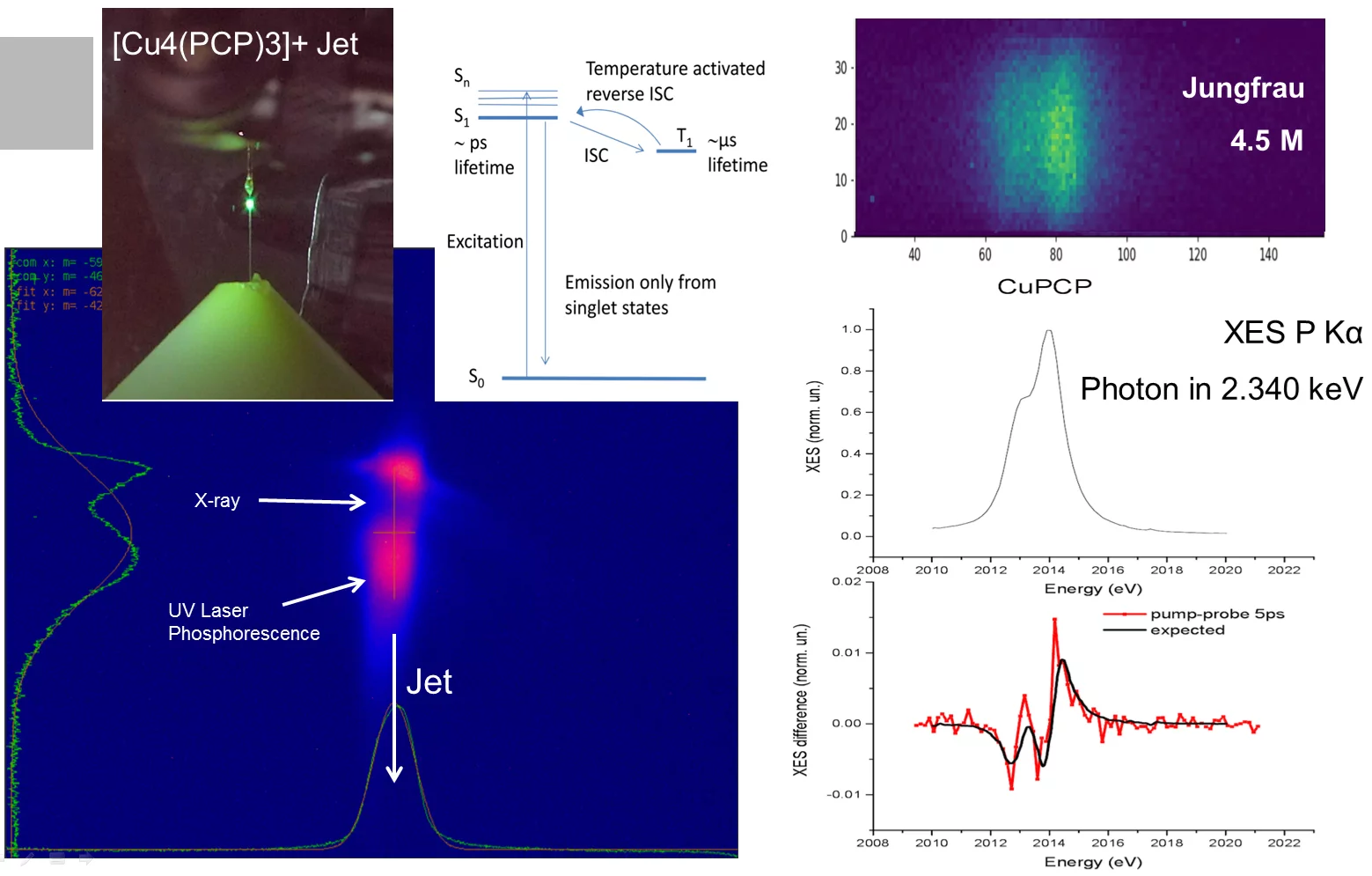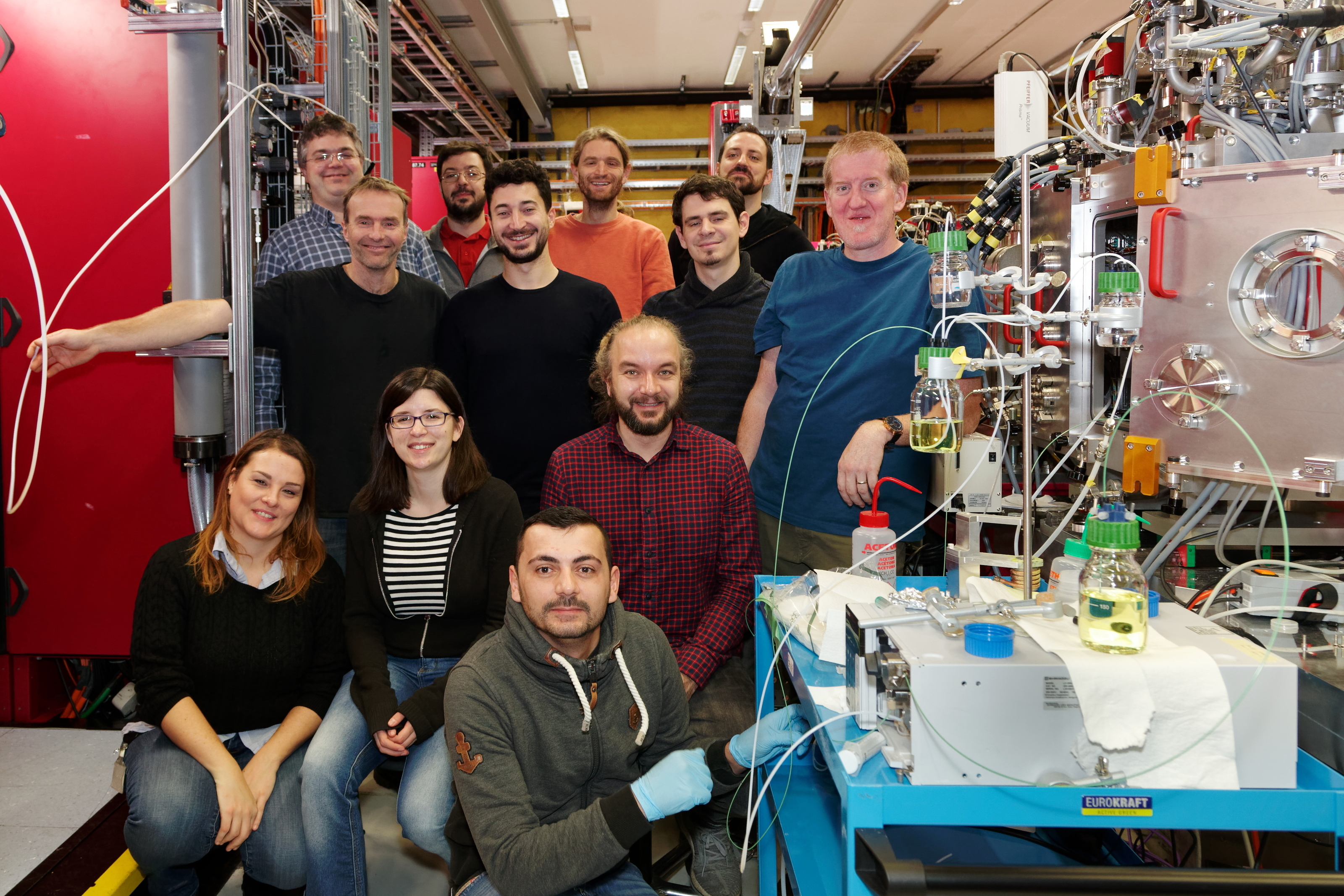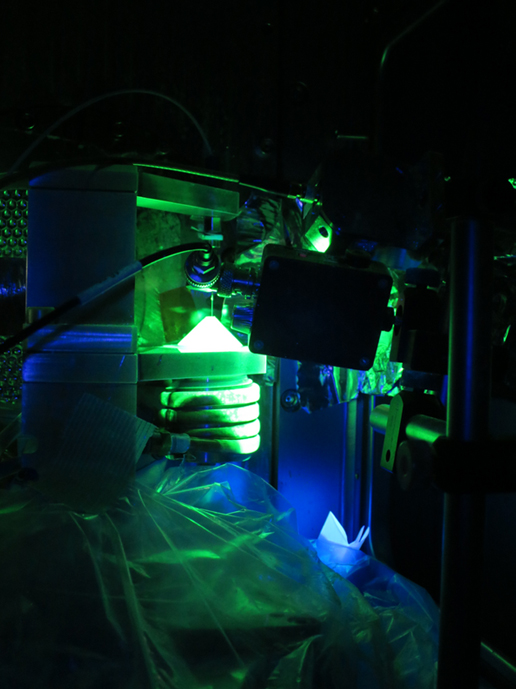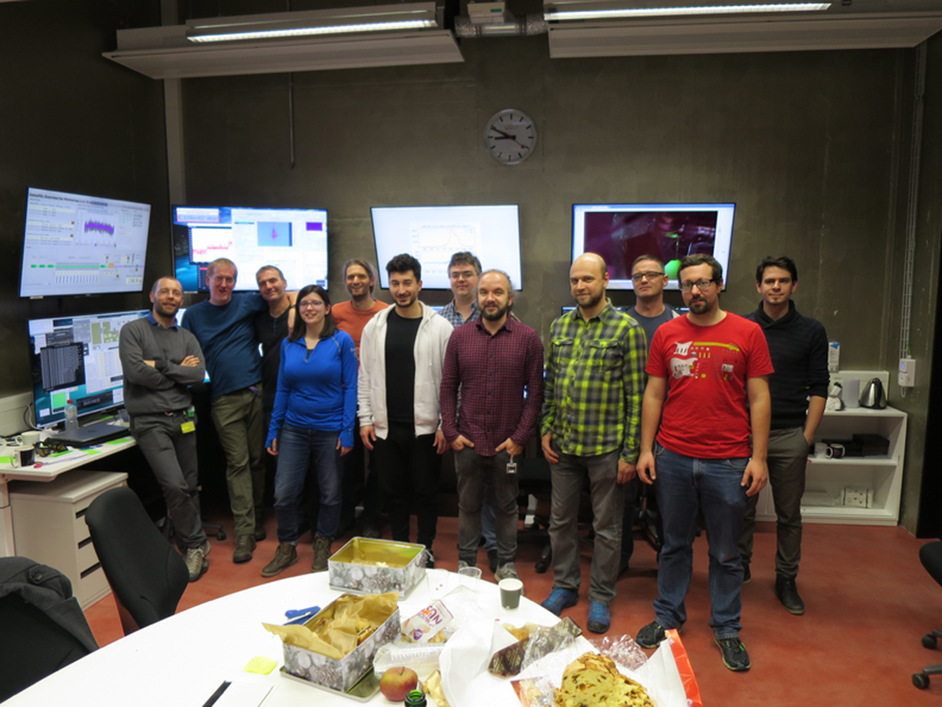On the 17th of December 2017 SwissFEL saw its first pilot experiment in the Alvra experimental station of the SwissFEL ARAMIS beamline. A team of scientists from the University of Bremen, Krakow and PSI, led by Matthias Vogt (Univ. Bremen) and Chris Milne (PSI)in collaboration with J. Szlachetko, J. Czapla-Masztafiak, W. M. Kwiatek (Inst. of Nucl.Phys. PAN (Krakow), successfully did the first pilot experiment at SwissFEL-Alvra on UV photo-induced charge transfer in OLED system.
With ever-increasing demands on low-cost, low-power display technology, significant resources have been invested in identifying OLED materials that are based on Earth-abundant materials while maintaining high internal quantum efficiencies. The recent pilot experiment performed at SwissFEL’s Alvra experimental station aimed to use X-ray spectroscopy to investigate a promising OLED candidate based on copper and phosphorus. This molecule, synthesized by Dr. Matthias Vogt from the University of Bremen, is based on a physical phenomenon called thermally activated delayed fluorescence, which allows for extremely high energy efficiencies to be achieved. The experiment probed how the phosphorus atoms are involved in the fluorescence process as a complement to longer-timescale measurements on the copper atoms performed at the Swiss Light Source’s SuperXAS beamline by Dr. Grigory Smolentsev and collaborators. The SwissFEL measurements confirm that the phosphorus atoms are directly involved in the charge transfer process in the molecule, and lay the foundation for future investigations of the mechanisms behind the efficiency of the delayed fluorescence process read more.
The SwissFEL Alvra experimental station headed by Chris Milne is designed as a pump-probe experimental station, which will focus on investigating photochemical and photobiological systems using some combination of X-ray spectroscopy and X-ray scattering from 2 to 12.4 keV. The first experiment was done in the Alvra Prime: an experimental chamber located at the X-ray focus (~1 μm) capable of operating in neutral environments (He or N2) or vacuum, coupled to a 2D 16M Jungfrau detector and an X-ray emission spectrometer located in vacuum using a dispersive von Hamos geometry targeting the 2-5 keV energy range Alvra Prime.
With ever-increasing demands on low-cost, low-power display technology, significant resources have been invested in identifying OLED materials that are based on Earth-abundant materials while maintaining high internal quantum efficiencies. The recent pilot experiment performed at SwissFEL’s Alvra experimental station aimed to use X-ray spectroscopy to investigate a promising OLED candidate based on copper and phosphorus. This molecule, synthesized by Dr. Matthias Vogt from the University of Bremen, is based on a physical phenomenon called thermally activated delayed fluorescence, which allows for extremely high energy efficiencies to be achieved. The experiment probed how the phosphorus atoms are involved in the fluorescence process as a complement to longer-timescale measurements on the copper atoms performed at the Swiss Light Source’s SuperXAS beamline by Dr. Grigory Smolentsev and collaborators. The SwissFEL measurements confirm that the phosphorus atoms are directly involved in the charge transfer process in the molecule, and lay the foundation for future investigations of the mechanisms behind the efficiency of the delayed fluorescence process read more.
The SwissFEL Alvra experimental station headed by Chris Milne is designed as a pump-probe experimental station, which will focus on investigating photochemical and photobiological systems using some combination of X-ray spectroscopy and X-ray scattering from 2 to 12.4 keV. The first experiment was done in the Alvra Prime: an experimental chamber located at the X-ray focus (~1 μm) capable of operating in neutral environments (He or N2) or vacuum, coupled to a 2D 16M Jungfrau detector and an X-ray emission spectrometer located in vacuum using a dispersive von Hamos geometry targeting the 2-5 keV energy range Alvra Prime.
Facility: SwissFEL
References: Chris Milne; chris.milne@psi.ch; Paul Scherrer Institut, CH-5232 Villigen PSI, Switzerland



